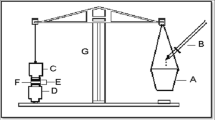Abstract
In order to improve the bioavailability of the antidepressant drug, venlafaxine hydrochloride, in situ mucoadhesive thermoreversible gel, was formulated using Lutrol F127 (18%) as a thermo gelling polymer. Mucoadhesion was modulated by trying carbopol 934, PVP K30, HPMC K4M, sodium alginate, tamarind seed gum, and carrageenan as mucoadhesive polymers. Results revealed that as the concentration of mucoadhesive polymer increased the mucoadhesive strength increased but gelation temperature decreased. Formulation was optimized on the basis of clarity, pH, gelation temperature, mucoadhesive strength, gel strength, viscosity, drug content, diffusion through sheep nasal mucosa, histopathological evaluation of mucosa, and pharmacodynamic study in rats. Final formulation T5 containing 18% Lutrol F127 and 0.3% PVP K30 was considered as an optimized formulation. T5 released 97.86 ± 0.073% drug in 150 min with a flux of 0.1545 mg cm−2 min−1 and gelation temperature 31.17 ± 0.30°C. Histopathological evaluation of nasal mucosa revealed that T5 formulation was safe for nasal administration as it caused no damage to nasal epithelium. From the results of pharmacodynamic study, mainly forced swim test (FST), it was concluded that venlafaxine hydrochloride was more effective as an antidepressant by nasal route as in situ gel nasal drops in comparison to oral administration of equivalent dose.








Similar content being viewed by others
REFERENCES
Feighner JP. The role of venlafaxine in rational antidepressant therapy. J Clin Psychiatry. 1994;55:98–100.
Hussein A. Intranasal drug delivery. Adv Drug Deliv Rev. 1998;29:39–49.
Ugwoke MI, Verbeke N, Kinget R, Agu RU, Vanbilloen H, Baetens J. Scintigraphic evaluation in rabbits of nasal drug delivery system based on carbopol 971 P and carboxymethylcellulose. J Control Release. 2000;68:207–14.
Behl CR, Pimplaskar HK, Sileno AP, DeMeireles J, Romeo VD. Effects of physicochemical properties and other factors on systemic nasal drug delivery. Adv Drug Deliv Rev. 1998;29:89–116.
Shinde JS. In situ mucoadhesive nasal gels of metoclopramide hydrochloride: preformulation and formulation studies. J Pharm Res. 2008;1(1):88–96.
Edsman K, Carlfors J, Petersson R. Rheological evaluation of poloxamer as an in situ gel for ophthalmic use. Eur J Pharm Sci. 1998;6:105–12.
Zhang L, Parson DL, Navarre C, Kompella UB. Development and in-vitro evaluation of sustained release poloxamer 407 (P407) gel formulations of ceftiofur. J Control Release. 2002;85:73–81.
Johnston TP, Punjabi MA, Froelich CJ. Sustained delivery of interleukin-2 from a poloxamer gel matrix following intraperitonial injection in mice. Pharm Res. 1992;9:425–34.
Schmolka IR. Artificial skin I: preparation and properties of pluronic-127 gels for treatment of burns. J Biomed Mater Res. 1972;6:571–82.
Choi HG, Oh YK, Kim CK. In situ gelling and mucoadhesive liquid suppository containing acetaminophen: enhanced bioavailability. Int J Pharm. 1998;165:23–32.
Yong CS, Choi JS, Quan QZ, Rhee JD, Kim CK, Lim SJ. Effect of Na chloride on the gelation temperature, gel strength and bioadhesive force of poloxamer gels containing diclofenac Na. Int J Pharm. 2001;226:195–205.
Jones DS, Woolfson AD, Brown AF, Coulter WA, McClelland C, Irwin CR. Design characterization and preliminary clinical evaluation of a novel mucoadhesive topical formulation containing tetracycline for the treatment of periodontal disease. J Control Release. 2000;67:357–68.
Chng HS, Park H, Kelly P, Robinson JR. Bioadhesive polymers as platforms for oral controlled drug delivery II. Synthesis and evaluation of some swelling water-insoluble bioadhesive polymers. J Pharm Sci. 1985;74:339–405.
Keny RV, Lourenco CF. Formulation and evaluation of thermoreversible in situ gelling and mucoadhesive diltiazem hydrochloride liquid suppository. Int J Pharma Biol Sci. 2010;1(1):1–17.
Choi HG, Kim CK, Jung JH, Ryu JM, Yoon SJ. Development of in situ-gelling and mucoadhesive acetaminophen liquid suppository. Int J Pharm. 1998;165:33–44.
Pisal S, Shelke V, Mahadik K, Kadam S. Effect of organogel components on in vitro nasal delivery of propranolol hydrochloride. AAPS PharmSciTech. 2004;5:1–9.
Cheng Y, Watts P, Hinchcliffe M, Hotchkiss R, Nankervis NF, Faraj A. Development of a novel nasal nicotine formulation comprising an optimal pulsatile and sustained plasma nicotine profile for smoking cessation. J Control Release. 2002;79:243–9.
Tas C, Ozkan CK, Savaser A, Ozkan Y, Tasdemir U, Altunay H. Nasal absorption of metoclopramide from different carbopol 981 based formulations: in vitro, ex vivo, and in vivo evaluation. Eur J Pharm Biopharm. 2006;64:246–54.
Majithiya RJ, Ghosh PK. Thermoreversible-mucoadhesive gel for nasal delivery of sumatriptan. AAPS PharmSciTech. 2006;7(3):1–7.
Dhir A, Kulkarni SK. Involvement of l arginine nitric oxide cyclic guanosine monophosphate pathway in the antidepressant-like effect of venlafaxine in mice. Prog Neuro-Psychopharmacol Biol Psychiatry. 2007;31:921–5.
Mygind N, Dahl R. Anatomy, physiology and function of the nasal cavity in health and disease. Adv Drug Del Rev. 1998;29:3–12.
Chien YW, Su KSE, Chang SF. Nasal systemic drug delivery. New York: Marcel Dekker; 1999. p. 39–78.
Abd Elhady SS, Mortada N, Awad GAS, Zaki NM, Taha RA. Development of in situ gelling and mucoadhesive mebevarine hydrochloride solution for rectal administration. Saudi Pharm J. 2003;11:159–71.
Dumortier G, Grosslord JL, Agnely F, Chaumeil JC. A review of poloxamer 407 pharmaceutical and pharmacological characteristics. Pharm Res. 2006;23:2709–27.
ACKNOWLEDGMENTS
The authors are thankful to Lupin Research Park, Pune, for providing VENH as a gift sample.
Author information
Authors and Affiliations
Corresponding author
Rights and permissions
About this article
Cite this article
Bhandwalkar, M.J., Avachat, A.M. Thermoreversible Nasal In situ Gel of Venlafaxine Hydrochloride: Formulation, Characterization, and Pharmacodynamic Evaluation. AAPS PharmSciTech 14, 101–110 (2013). https://doi.org/10.1208/s12249-012-9893-1
Received:
Accepted:
Published:
Issue Date:
DOI: https://doi.org/10.1208/s12249-012-9893-1




